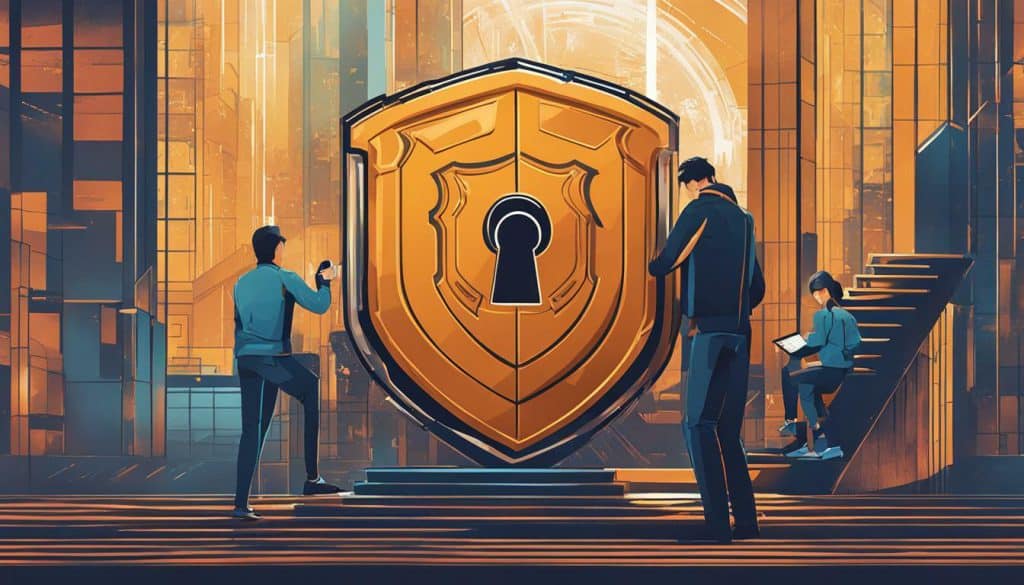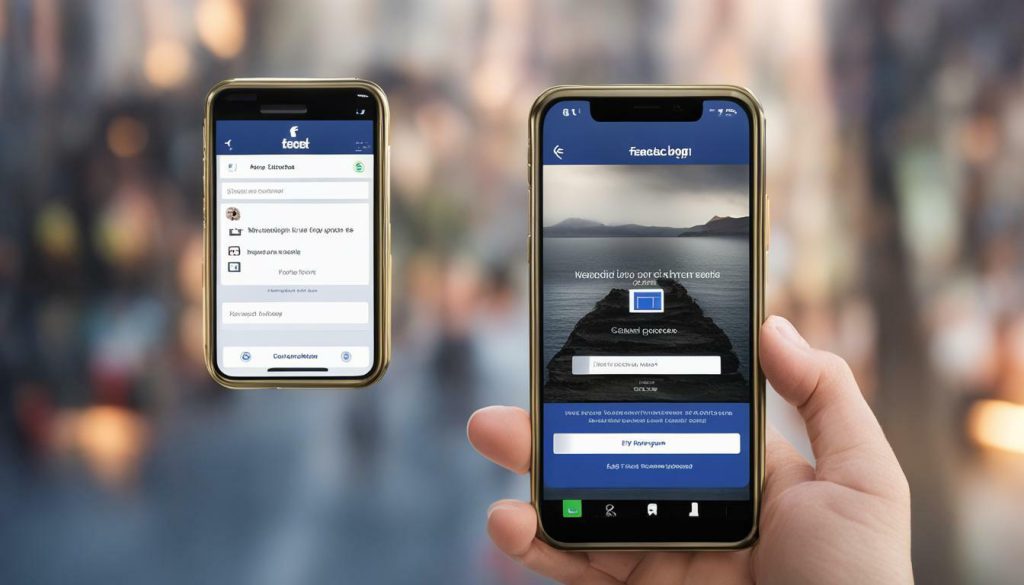Two-factor authentication (2FA) is an essential security feature that can be enabled or disabled on Facebook to enhance your account’s security. It acts as an additional layer of protection, ensuring that only authorized individuals have access to your account. This article provides a step-by-step tutorial on how to manage 2FA on Facebook, allowing you to customize your account’s security settings based on your preferences.
- Enabling 2FA on Facebook is a recommended security measure to safeguard your account.
- You can enable 2FA using text message (SMS) or a third-party authentication app.
- It’s important to keep your contact information up-to-date to ensure a smooth 2FA experience.
- If you choose not to use 2FA, there are alternative methods available for securing your account.
- Troubleshooting tips are provided to address common issues related to 2FA on Facebook.
Now let’s dive into the detailed tutorial on how to enable or disable 2FA on Facebook, giving you control over your account’s security.
How to Enable Two-Factor Authentication on Facebook
Enabling two-factor authentication on Facebook is a simple process that can provide an extra layer of security to your account. By requiring an additional verification step, such as a text message or authentication app, it helps prevent unauthorized access and protects your personal information.
To enable two-factor authentication on Facebook, follow these steps:
- Log in to your Facebook account and go to the Settings menu.
- Select “Security & Login” from the left-hand side menu.
- Scroll down to the “Two-Factor Authentication” section and click on “Edit” next to it.
- Choose whether you want to enable 2FA with a text message (SMS) or an authentication app.
- If you select SMS, enter your phone number and click “Next”. You’ll receive a verification code that needs to be entered on Facebook to complete the setup.
- If you choose an authentication app, follow the on-screen instructions to set it up and link it to your Facebook account.
Once you’ve completed these steps, two-factor authentication will be enabled, and you’ll be prompted to enter a verification code each time you log in to your Facebook account from an unrecognized device.

Note: Enabling two-factor authentication is highly recommended to enhance the security of your Facebook account. It may take a few extra seconds to log in each time, but the added protection is worth the peace of mind.
| Benefits of Two-Factor Authentication on Facebook |
|---|
| 1. Enhanced Security: 2FA adds an extra layer of protection to your Facebook account, making it more difficult for hackers to gain unauthorized access. |
| 2. Protection against Unauthorized Login Attempts: Even if someone manages to obtain your password, they won’t be able to log in without the verification code from your trusted device. |
| 3. Peace of Mind: With 2FA enabled, you can feel confident that your personal information, messages, and photos on Facebook are better protected. |
Remember to keep your contact information up-to-date on Facebook, including your phone number and email address. This ensures that you can continue to receive the verification codes and stay protected with two-factor authentication.
Importance of Keeping Contact Information Up-to-Date
To ensure a seamless two-factor authentication process on Facebook, it is crucial to maintain up-to-date contact information associated with your account. Two-step verification adds an extra layer of security, requiring users to provide a second form of authentication, such as a verification code sent to their phone or email, in addition to their password when accessing their account.
By keeping your contact details current, you can receive these verification codes promptly, enhancing the security of your account. It is recommended to regularly check and update your phone numbers and email addresses linked to your Facebook profile. This ensures that you can receive the necessary codes in case of any suspicious activities or attempted unauthorized access to your account.
Remember that having outdated or incorrect contact information can lead to difficulties in retrieving your account if you ever get locked out. Don’t forget to add an alternative email address and a backup phone number to your Facebook profile. This way, even if one contact method is compromised or inaccessible, you can still receive the necessary verification codes and regain access to your account.
| Benefits of Keeping Contact Information Up-to-Date | |
|---|---|
| 1. Enhanced security: Ensures you receive verification codes promptly. |  |
| 2. Quick account recovery: Provides alternative contact methods if needed. | |
| 3. Prevention of unauthorized access: Makes it harder for hackers to breach your account. |
Alternatives to Two-Factor Authentication
While two-factor authentication is recommended for enhanced account security on Facebook, there are alternative methods you can consider if you prefer not to use this feature. These alternatives provide additional layers of protection and ensure the safety of your personal information. One such alternative is using trusted friends to secure your account.
By selecting trusted friends, you can assign them as a backup method to access your account in case you get locked out. Facebook allows you to choose three to five friends whom you trust. If you ever face trouble logging in or lose access to your account, you can reach out to these friends for help in recovering your account. They will receive a security code that you can collect and use to regain access.
| Advantages | Disadvantages |
|---|---|
| Provides an additional layer of security | Relies on the availability and cooperation of trusted friends |
| Offers a way to recover your account if you’re locked out | Requires you to give trusted friends access to your account |
Another alternative is bypassing two-factor authentication. While this should only be done as a last resort, it can be useful if you find yourself unable to receive the 2FA code or facing difficulties turning off 2FA. Bypassing the authentication process can help regain access to your account, but it’s important to note that it may compromise the security of your account.
Remember, it’s crucial to weigh the advantages and disadvantages of each alternative method before deciding not to use two-factor authentication. Facebook continuously strives to enhance your account security, and using 2FA remains one of the most effective ways to protect your personal information.
Troubleshooting Tips for Two-Factor Authentication
Running into issues with two-factor authentication on Facebook? Here are some troubleshooting tips to help you overcome common challenges.
If you can’t receive the 2FA code, first make sure that your contact information, such as your phone number and email address, is up-to-date. Having accurate information linked to your account is crucial for receiving the codes. Go to your Facebook settings and verify that your phone number and email address are correct.
If your contact information is correct but you still can’t receive the 2FA code, try the following steps:
- Check your spam/junk folder: Sometimes, the 2FA code email might end up in your spam or junk folder. Look for it there and mark it as “not spam” to avoid future issues.
- Use a different contact method: If you’re trying to receive the code via text message (SMS), switch to email or vice versa. Sometimes, one method may be more reliable than the other.
If you can’t turn off 2FA, follow these troubleshooting tips:
- Clear browser cache: Sometimes, cached data can interfere with the settings. Clear your browser cache and try again.
- Try a different browser: If you’re experiencing issues with one browser, switch to a different one and see if you can turn off 2FA there.
Remember, two-factor authentication is an essential security feature to protect your Facebook account against unauthorized access. If you encounter difficulties, these troubleshooting tips should help you resolve most common issues. Stay vigilant and keep your account secure!

Two-factor authentication plays a crucial role in protecting your Facebook account from unauthorized access, making it an essential security measure to consider. By enabling this feature, you add an extra layer of security that goes beyond a traditional password. With 2FA, you will need to provide an additional piece of information, such as a verification code or fingerprint, to verify your identity and access your account. This significantly reduces the risk of someone gaining unauthorized access to your personal information or using your account without your knowledge.
With the rise in cyber threats and the potential for online accounts to be compromised, it’s essential to take measures to secure your Facebook account. Enabling two-factor authentication ensures that even if someone manages to obtain your password, they won’t be able to access your account without the second factor of authentication. This added security measure can provide peace of mind and help protect your personal information, including private messages, photos, and other sensitive data.
By following the step-by-step tutorial provided in this article, you can easily enable two-factor authentication on Facebook. Whether you choose to receive verification codes via text message (SMS) or use a third-party authentication app, the process is straightforward and can be completed on various platforms, including browsers, Android, and iOS. By taking a few minutes to enable 2FA, you can significantly enhance the security of your Facebook account and protect yourself from potential cyber threats.

As you prioritize the security of your Facebook account, it’s important to keep your contact information up-to-date. This ensures that you receive the verification codes promptly and securely. By having accurate phone numbers and email addresses linked to your account, you can guarantee a smooth 2FA experience without any delays or complications. Additionally, in case you choose not to use two-factor authentication, this article provides alternative methods to secure your Facebook account, such as utilizing trusted friends or bypassing 2FA when necessary.
| Troubleshooting Tips for Two-Factor Authentication |
|---|
| Issue: Can’t receive 2FA code |
| Solution: Check if your contact information is up-to-date and correct. Ensure that your phone number or email address associated with your account is functioning properly. If the problem persists, contact Facebook support for further assistance. |
| Issue: Can’t turn off 2FA |
| Solution: Follow the steps mentioned in the tutorial to disable 2FA on Facebook. If you encounter any difficulties, double-check if you have followed the correct steps or try using a different platform or browser. If the issue persists, reach out to Facebook support for additional guidance. |
By implementing two-factor authentication and following the guidelines provided in this tutorial, you can significantly strengthen the security of your Facebook account. Protecting your personal information is crucial in today’s digital age, and taking proactive measures to safeguard your online presence is essential. Don’t wait until it’s too late – enable 2FA on Facebook today and enjoy the benefits of enhanced security and peace of mind.
Conclusion
In conclusion, two-factor authentication provides an additional layer of security for your Facebook account, and enabling this feature is highly recommended to protect your personal information.
By following the step-by-step tutorial provided in this article, you can easily enable or disable two-factor authentication on Facebook across different platforms, including browsers, Android, and iOS.
It is important to keep your contact information up-to-date on Facebook to ensure a seamless two-factor authentication experience. Having accurate phone numbers and email addresses linked to your account allows you to receive 2FA codes promptly.
If you choose not to use two-factor authentication, alternative methods such as relying on trusted friends and using bypass techniques can help you secure your Facebook account.
In case you encounter any difficulties, troubleshooting tips are available for situations where you can’t receive 2FA codes or face challenges turning off two-factor authentication.
Ultimately, the importance of two-factor authentication cannot be overstated. It acts as a safeguard for your Facebook account, protecting your personal information from unauthorized access. Don’t hesitate to enable this feature and enhance the security of your Facebook account today.
FAQ
How do I disable two-factor authentication on Facebook?
To disable two-factor authentication on Facebook, follow these steps:
1. Go to the Facebook website or open the Facebook app on your device.
2. Click on the menu button (three horizontal lines) or the arrow button (iOS) in the top right corner.
3. Select “Settings & Privacy” and then “Settings.”
4. Click on “Security and Login.”
5. Scroll down to the “Two-Factor Authentication” section and click on “Edit.”
6. Click on “Turn Off” next to Two-Factor Authentication.
7. Confirm your decision to disable two-factor authentication by clicking “Turn Off” again.
How do I enable two-factor authentication on Facebook?
To enable two-factor authentication on Facebook, follow these steps:
1. Go to the Facebook website or open the Facebook app on your device.
2. Click on the menu button (three horizontal lines) or the arrow button (iOS) in the top right corner.
3. Select “Settings & Privacy” and then “Settings.”
4. Click on “Security and Login.”
5. Scroll down to the “Two-Factor Authentication” section and click on “Edit.”
6. Choose either “Use Text Message (SMS)” or “Use a Third-Party App” as your two-factor authentication method.
7. Follow the on-screen instructions to set up two-factor authentication using your preferred method.
Why is it important to keep my contact information up-to-date on Facebook?
Keeping your contact information up-to-date on Facebook is crucial for a smooth two-factor authentication experience. Accurate phone numbers and email addresses linked to your account ensure that you can receive the two-factor authentication codes promptly and efficiently.
What are the alternatives to two-factor authentication on Facebook?
If you choose not to use two-factor authentication on Facebook, there are alternative methods for securing your account. One option is to use trusted friends to regain access to your account in case of a lockout. Facebook also provides information on how to bypass two-factor authentication if you ever get locked out.
What should I do if I can’t receive the two-factor authentication code on Facebook?
If you are unable to receive the two-factor authentication code on Facebook, you can try the following troubleshooting tips:
1. Ensure that the phone number or email address linked to your account is correct and up-to-date.
2. Check your spam or junk folder in case the code email was filtered.
3. Contact your mobile service provider to ensure there are no issues with receiving text messages.
4. If using a third-party authentication app, make sure it is properly installed and set up.
What should I do if I can’t turn off two-factor authentication on Facebook?
If you are experiencing difficulties turning off two-factor authentication on Facebook, try these troubleshooting tips:
1. Clear your browser cache and cookies before attempting to disable two-factor authentication again.
2. Use a different browser or device to disable two-factor authentication.
3. If using the Facebook app, try uninstalling and reinstalling it before attempting to disable two-factor authentication.
Why is two-factor authentication important for securing my Facebook account?
Two-factor authentication provides an extra layer of security for your Facebook account. By requiring a second verification method, such as a code sent to your phone or generated by an authentication app, it helps protect your personal information from unauthorized access.

I’m Kendra, and I’ve dedicated this blog to unraveling the complexities of Facebook—from algorithms to community building. Whether you’re a business owner or an individual looking to amplify your presence, you’ve come to the right place. Together, let’s make your Facebook interactions meaningful and impactful
